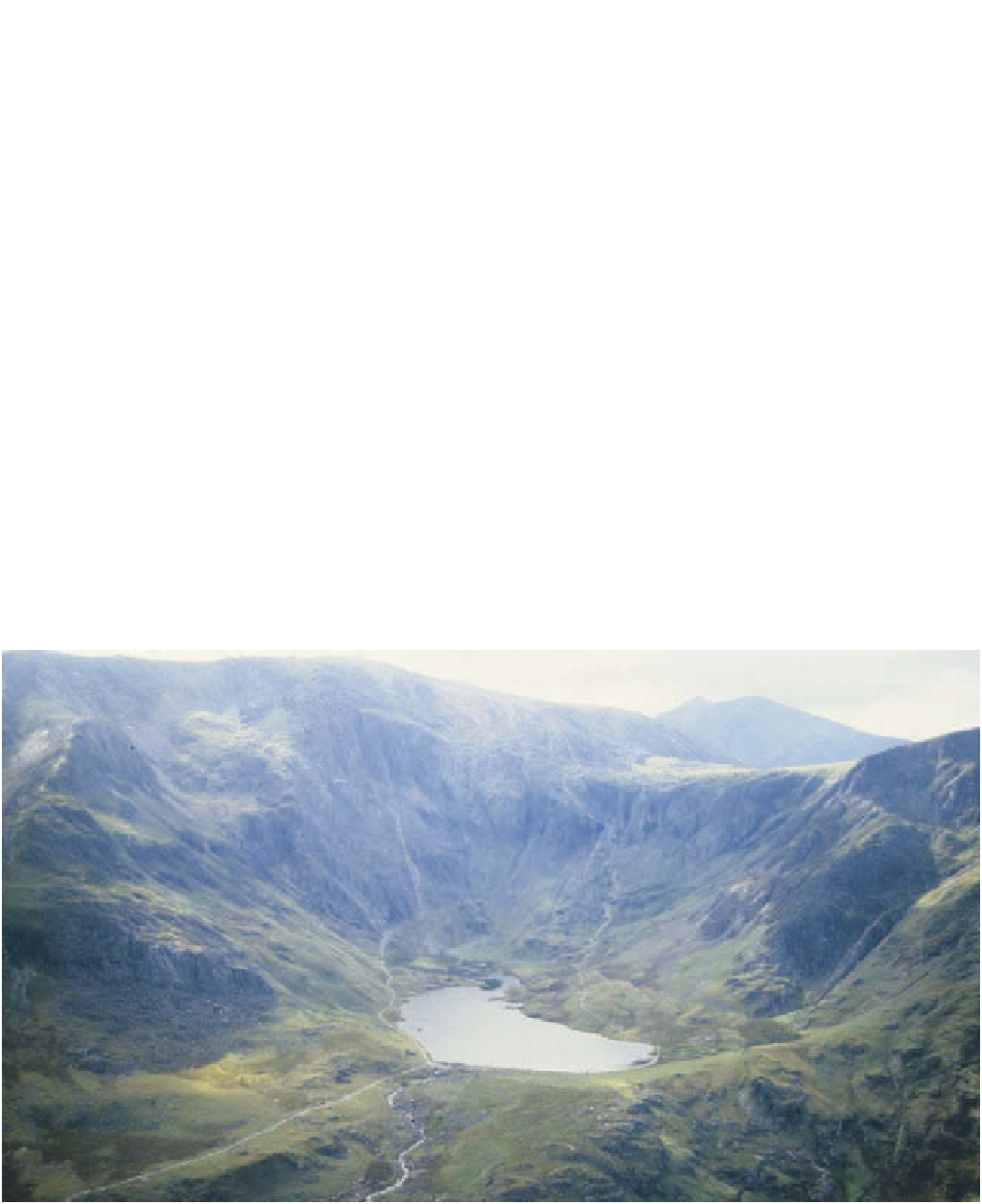Geoscience Reference
In-Depth Information
mammoths. No signs of trees have appeared but it is
argued that the intensity of grazing and unstable soils,
with conditions like central Siberia today, prevented any
regeneration of trees. It is also possible that there was
insufficient time for trees to migrate from existing areas
of forest. Clearly we have to use many sources of evidence
to determine the type of environmental conditions
prevailing. What we can be reasonably sure about is that
even during a glacial period there were times when climate
conditions showed considerable improvement.
The last glacial period reached its maximum intensity
about 18,000
BP
to 16,000 years
BP
. The term 'before
the present' (
BP
) is used whenever dating is based on
radiometric methods involving isotopic decay such as
carbon-14 (radiocarbon) or potassium-argon (K-Ar). We
will go into more details about the types of dating and
their associated problems in
Chapter 23.
The advances and
retreats of glaciers can be used to interpret changes of
temperature and moisture regimes. Ice cores have been
taken through the Antarctic and the Greenland ice sheets,
where estimates of seasonal climatic conditions may be
interpreted from the layers of ice. Sudden oscillations
giving rise to interstadials have been found in the
Greenland ice cores, with up to twenty-four such events
between 115,000
BP
and 4,000
BP
. Even the nature of
atmospheric composition may be determined from the
content of air inclusions within the ice, which is useful
when trying to determine the cause of such changes.
About 18,000
BP
large parts of the northern hemis-
phere, especially Europe and North America, were ice-
covered (
Figure 9.3
).
Antarctic ice advanced farther
equatorwards by about 5° latitude but, because the
southern hemisphere continents cover only small areas
in temperate latitudes, ice developed only in highland
areas, increasing glacier size and frequency. Sea surface
temperatures as estimated from foraminiferal remains
and oxygen isotope analysis indicate major decreases in
some areas, such as the north-east Atlantic, where the
warm oceanic current changed its position and tempera-
ture reductions of up to 10
C occur. Recent work on
tropical sea surface temperatures at 18,000
BP
in areas
such as Brazil suggests that temperatures may have been
considerably lower, by 3-5
. Ocean temperatures appear
to have been much lower off Namibia as well as along the
South Equatorial Current in the central Atlantic (
Figure
and along the equator. There does seem to be much
disagreement on the precise values, though it is believed
Plate 9.1
Cwm Idwal, Snowdonia. The Loch Lomond stadial moraines are the hummocks on both sides of the further end of
heritage.
Photo: Ken Addison










































